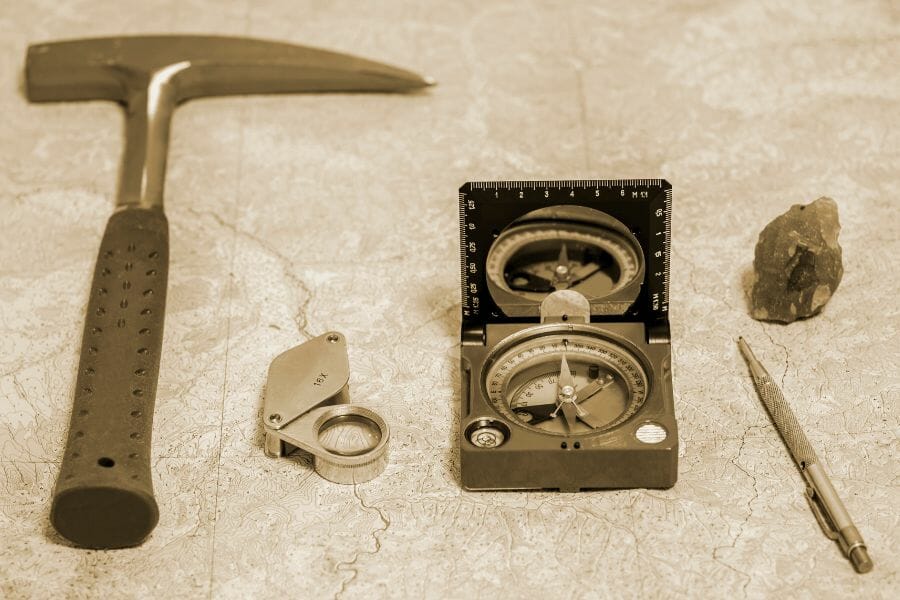There are a lot of great rockhounding tools available but you really don’t need to break the bank in order to get everything that you need. One of the best things about rockhounding is just how easy it is for anyone to get started without spending a lot of money.
Over the decades that we have spent searching for various rocks, minerals, and gems around the world we really narrowed down what rockhounding equipment is necessary, what is nice to have, and what is just a waste of time to bring. Today, we’re going to share our favorites to use in all of our recommended mining spots.
These are our favorite tools for rock hunting that we recommend for both beginners and those who are more experienced. The last thing you want is to be out in the field with a shoddy tool that breaks, or worse, missing a tool completely that would have helped you collect an incredible rock or crystal.
- Essential to the collection of rocks, minerals, and gems in many situations
- Trusted and proven by the Rock Chasing team
- Extremely dependable and durable
- Safe to use in most enviroments
- Easy to locate and purchase
- Fairly priced
With these criteria in mind we have been able to put together an excellent list the will be hard to argue with!
The Top Rockhounding Tools We Recommend
There are several pieces of equipment that will make any rockhound’s life a lot easier. We will go through each tool one-by-one and give you our recommendations and reasons. If we miss anything feel free to let us know!
One quick note, as an Amazon Associate I earn from qualifying purchases but we try very hard to only recommend gear we would use ourselves and often recommend brands you can’t find on Amazon.
Sturdy rock hammers are THE essential tool for rockhounds: We like the Estwing 22 oz Geological Hammer (buy on Amazon here)
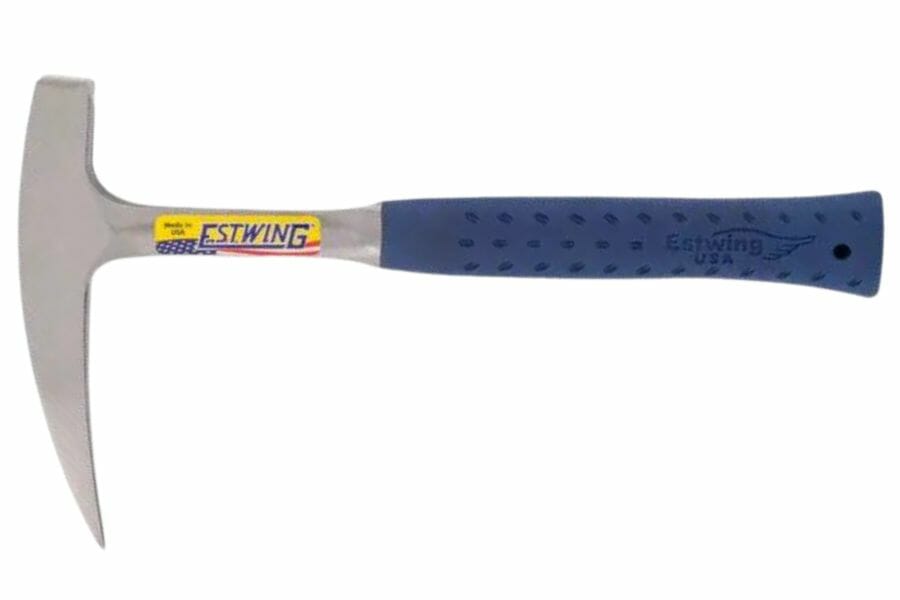
The most useful and versatile tool for rock hunting is undoubtedly a good rock hammer or rock pick. These sturdy tools are designed specifically for breaking, chipping, and prying open rocks to reveal the treasures within.
Rock hammers typically have a flat head for precise strikes and a pointed tip for chipping, making them ideal for extracting crystals and fossils or splitting sedimentary rocks.
It’s very important that you don’t use a carpenter’s hammer for this type of work as it isn’t designed for it. They are not strong enough for these types of impacts and can shatter!
The Estwing 22 oz Rock Pick is the perfect size and weight for a really wide variety of activities from digging to prying to hammering. We’ve been using Estwing picks and hammers for a very long time and their durability is impressive.
Alternatives to consider
If you’re looking for a rock hammer for a child or smaller adult you can also consider the lighter Estwing 13 oz Hammer. It’s half the weight but won’t have as much punch when hammering.
If you’re looking for something a bit fancier or prefer a leather grip you can also get the 22 oz hammer with a nice leather grip.
Rugged set of chisels: We like the Kendo 3-piece Chisel Set (buy on Amazon here)
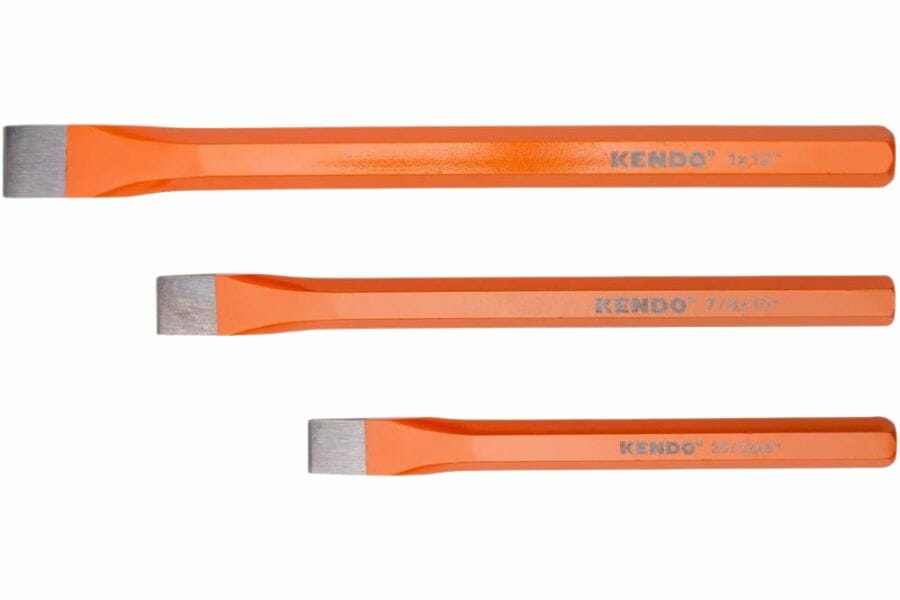
A few good chisels are a necessity for any rockhound, especially if you’re looking for rocks or minerals that tend to be embedded. A well-made chisel allows for precise and controlled work when extracting delicate specimens from surrounding rock.
A lot of people just use a big flathead screwdriver as a chisel or for prying but that can be very dangerous! Screwdrivers are not meant for that type of strain and will often splinter and break causing some serious injury.
Chisels of various sizes and shapes can help in removing excess material, splitting rocks along natural fault lines, or carefully extracting embedded fossils and crystals. A narrower chisel can reach into tight crevices, while a broader one can remove larger chunks efficiently.
The 3-piece Chisel Set from Kendo allows both new and experienced seekers to have a simple set of rugged chisels that will work for 99% of the situations you’re in. Combined with a good rock hammer and you can get just about anything out of the earth!
With chisels of 8″, 10″, and 12″ and a roll-up case these chisels are small enough to maneuver in tight spaces and easy to carry. The last thing you want is to have to carry around dozens of pounds of steel to every dig site.
Alternatives to consider
If you’re looking for something that has a little hand protection you could also go with the Finder 12-inch Heavy Duty Chisel. It’s a solid all-around chisel and will last a long time. You won’t get the variety of chisels that you will with the Kendo set but it will do most jobs.
Small hand sledgehammer: We like the Estwing 3-Pound Sledge (buy on Amazon here)
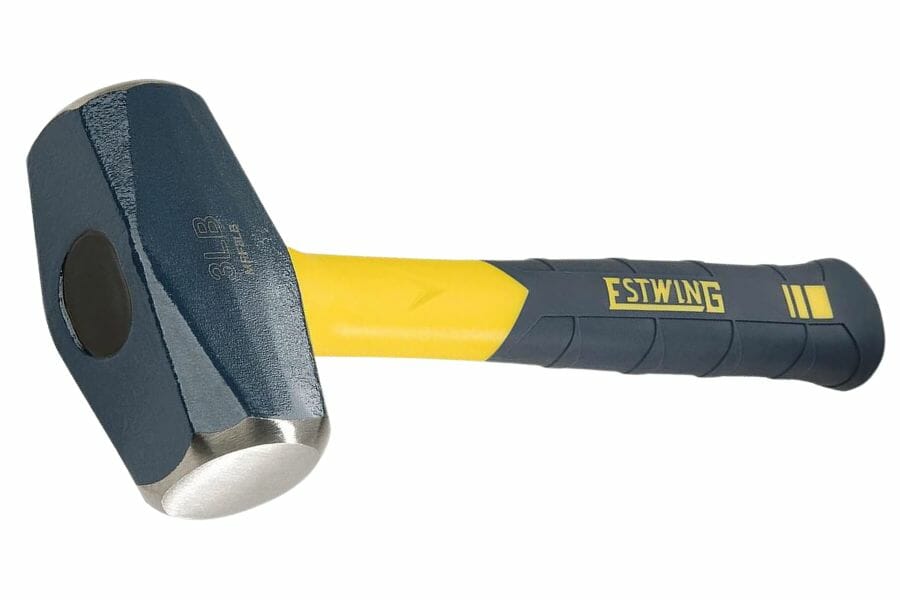
A small sledgehammer is going to be one of the most used tools in your rockhounding kit. Its weight and force are perfect for breaking apart larger rocks or geodes to reveal the hidden crystals, fossils, or minerals within.
The sledgehammer can also be used with chisels, providing the necessary impact to split rocks cleanly along their natural fracture lines. Despite its power, a small sledgehammer’s compact size makes it easy to carry during outdoor rock hunting expeditions.
We really like the 3-pound Estwing sledge because it is the perfect middle-ground of weight, size, and force. You want something big enough to break through any rocks you come across but not so heavy and large that carrying it and using it is exhausting.
It also has a great no-slip grip that feels good in your hand even if you’re hot and sweaty!
Alternatives to consider
Any smaller sledgehammer you have on hand will do the job so you don’t need to buy a special “rockhounding sledgehammer”. If you want something a little larger with more breaking power you can go with Estwing’s 4-pound sledge.
Compact shovel: We like the Koleiya 28-inch shovel (buy on Amazon here)
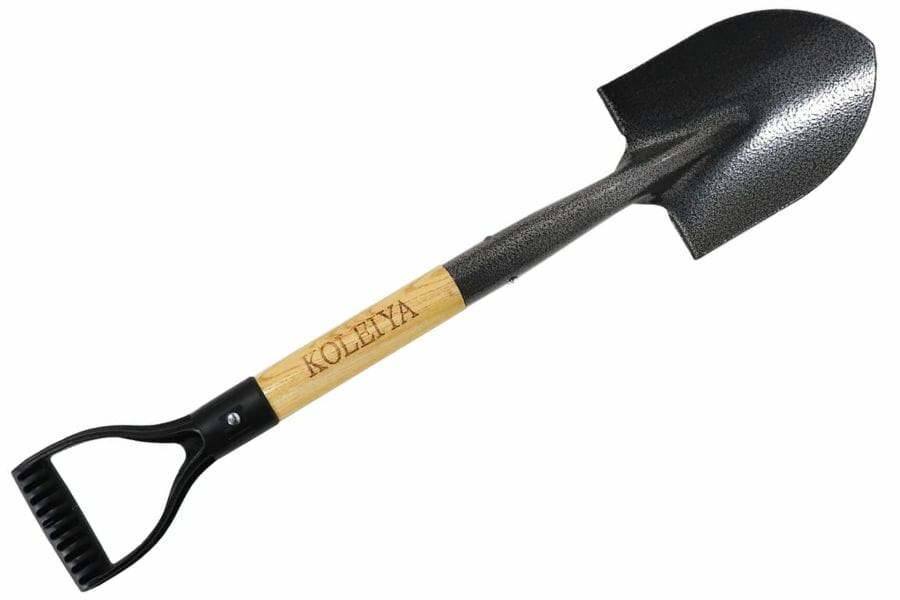
If you’re doing any searching through dirt, mine dumps, sand, or gravel having a compact shovel will be a lifesaver. A lot of the process of hunting for rocks and minerals involves moving dirt and rocks from one place to another and a shovel is perfect for that!
Its compact size is perfect for precise digging around valuable finds, and it’s also easy to carry on long treks or expeditions. A small shovel can also help in moving aside larger rocks or clearing debris from a promising site.
The 28-inch shovel from Koleiya has a solid combination of ruggedness and price. It’s also pretty easy to find. You can find a decent small shovel at many of your local hardware stores that would also do a reasonable job.
Alternatives to consider
Another option to consider if you want something that is more compact and collapsible is the TAC9ER Heavy Duty Folding Shovel. It is much more compact and portable but if you’re going to be doing a lot of digging you will want something larger. It’s a great option for expeditions where you will only need a shovel occasionally though.
Rock screen pan: We like the Wazakura 3PCS Soil Sieve Set (buy on Amazon here)
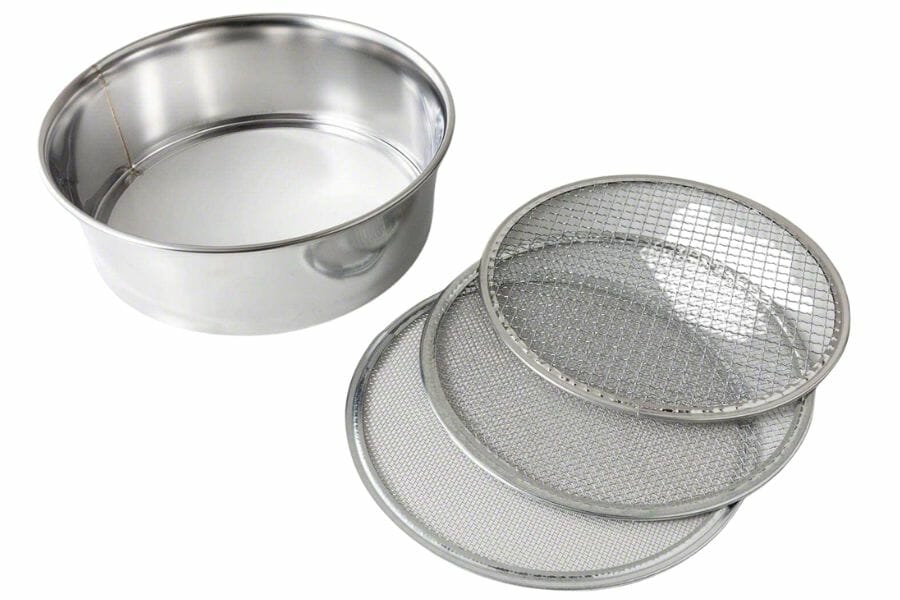
When you’re searching for smaller rocks, crystals, and gems in the dirt you are going to need a rock screen pan. These pans, which are essentially sieves, allow the user to sift through soil or gravel, filtering out larger rocks and debris and leaving behind the smaller treasures.
This is great in locations like riverbeds or gravel pits, where gems and minerals can be mixed with sediment. The rock screen pan enhances the efficiency of the search, increasing the chances of finding valuable specimens.
It can take a really long time to sift through the earth or the beach by hand. A good screen pan saves a ton of time.
The Wazakura 3PCS Soil Sieve Set is great because it’s lightweight and has three different size screens. It allows you to adjust the size of the rocks and crystals that you want to go after without having to bring additional pans.
Alternatives to consider
There are plenty of generic screen pans available but they tend to be of questionable quality. When you’re shopping for an alternative make sure that the quality and durability are high so that you don’t get stranded with a broken screen.
Hand lens with a guard: We like the JARLINK 30X 60X Illuminated Jewelers Loupe Magnifier (buy on Amazon here)
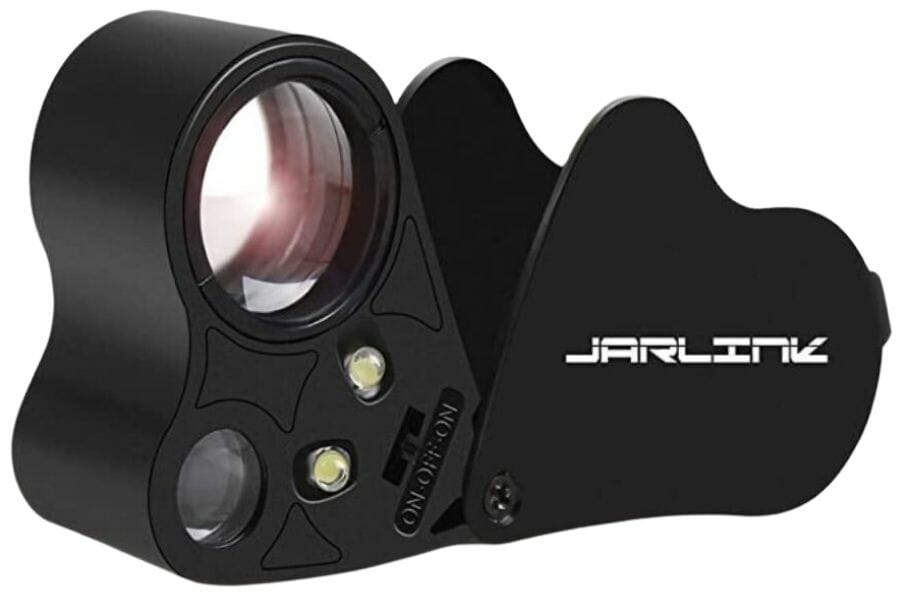
A reliable hand lens is the rock-collecting tool that is our favorite to use because every time we break it out we’ve found something interesting! This small, handheld magnifying device allows you to examine your finds closely, revealing fine details that can’t be seen with the naked eye.
It helps in identifying specific minerals or gemstones, spotting tiny fossils, or even determining the quality of crystals based on their color, clarity, and cut. A hand lens can also help to spot any fractures or inclusions in the stones.
You want a hand lens with at least a 10X or 20X magnification (higher can be better) that provides its own illumination. Make sure that the lens you buy has a guard on it so it doesn’t get scratched up as you bring it back and forth from your dig site.
Alternatives to consider
Since the Jarlink has worked so well for us and is very inexpensive we haven’t found another alternative that has the same combination of features, durability, and price to recommend yet. Let us know if you find one!
Stiff cleaning brush: We like the Atlasta Parts Cleaning Brush
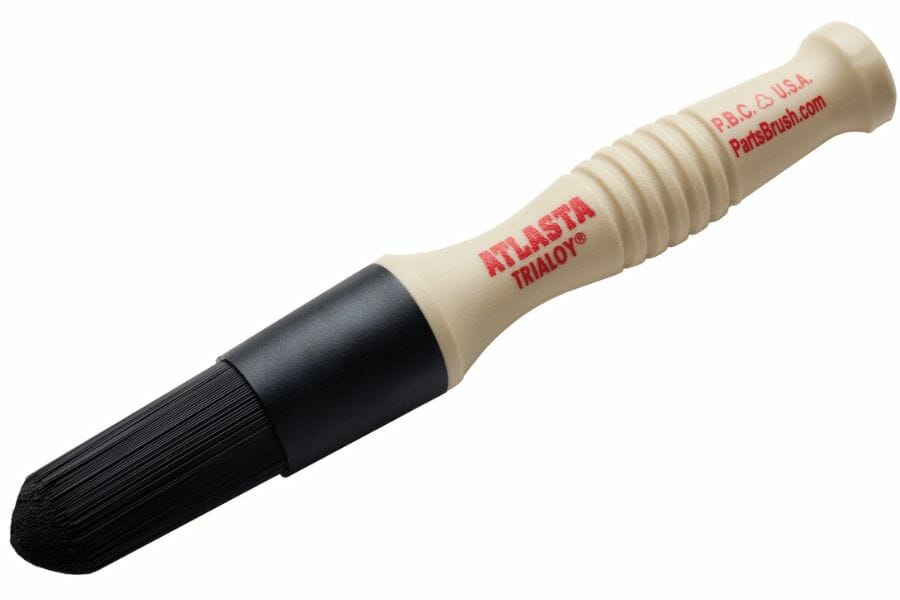
Many of the rocks and minerals you find are going to be caked in dirt, dust, and other sediment. You are going to need a good brush and water spray bottle to quickly and easily clean all of that off to see what you’ve found.
A lot of rockhounds, especially those who are newer to it, use wire brushes for this but that can be a big mistake. These brushes often stain or scratch the rocks you’re cleaning and do more harm than good.
A better option is a stiff parts cleaning brush like the Atlasta Parts Cleaning Brush. These brushes are typically used to clean engine parts but make fantastic tools for us. The bristles are very sturdy and are much less likely to scratch or stain your finds.
A good brush will help ensure that you’re not throwing any incredible specimens away that are just under a bit of dirt.
Alternatives to consider
You can get away with using stiff dish brushes on some rocks that aren’t too dirty but they tend to break down pretty quickly. They’re serviceable in a pinch but not really designed for the heavy-duty wear of scrubbing sharp rocks and crystals.
Strong crowbar: We like the 18″ Estwing Gad pry Bar (buy on Amazon here)
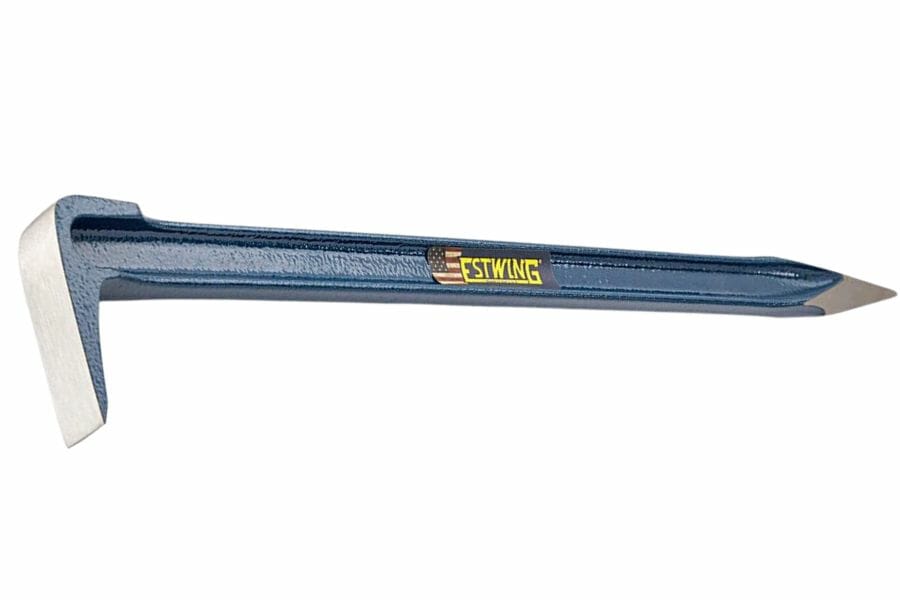
There are going to be a lot of times when you’re digging and come across a large rock that you need to get out of the way (or you want to pry loose). It’s situations like this when a crowbar is a lifesaver.
It can also be used to lever out embedded fossils or crystals, ensuring they are not damaged during extraction. Because it’s typically made of durable steel, a crowbar can withstand the rigors of rockhounding, making it a long-lasting addition to any rockhound’s tool kit.
The Estwin Gad Pry Bar has been our go-to but you can use any high-quality crowbar for this. Just make sure that it’s made of quality steel.
Alternatives to consider
A lot of rockhounds will use their chisels as prybars in a pinch. That can work sometimes (we’ve done it) but a crowbar makes things a lot easier and you don’t risk damaging your valuable chisels.
Durable bag: We like the Husky 18″ Tool Bag (buy on Amazon here)
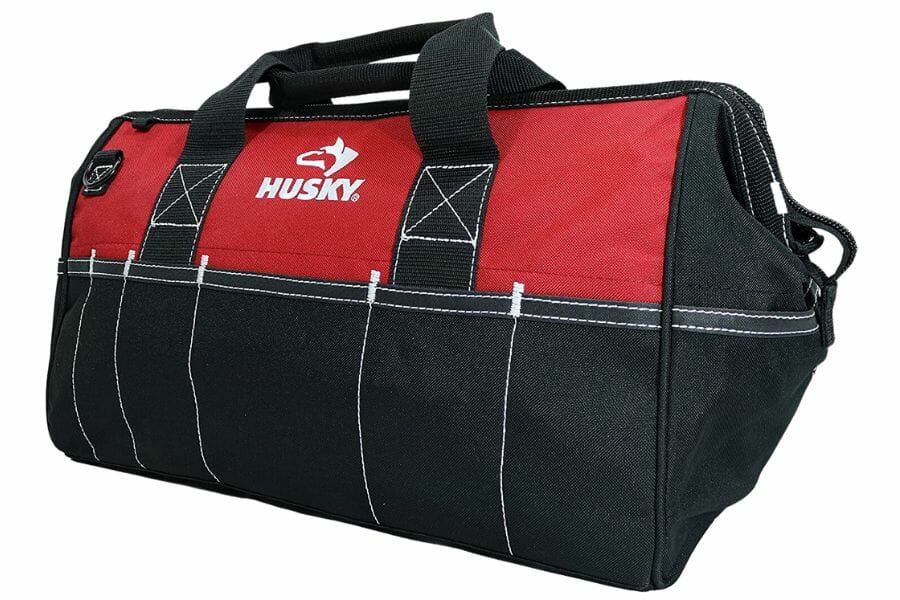
The bag you carry all of your rockhound supplies in is ultimately going to depend on where you’re going to be searching and your personal preferences. Hiking hours into the wilderness to a dig site is going to need a different bag than if you’re only walking a few hundred feet from your car.
You will want something that not only fits your rock-collecting tools but is also able to accommodate all of the beautiful minerals and crystals you’re going to be bringing back with you. It needs to be durable but you don’t want it to be extremely heavy (your tools are heavy enough).
The Husky 18″ Tool Bag has been our favorite bag lately, especially for digs that don’t require a long walk from our truck. It can fit the vast majority of the gear we carry (the shovel and bucket is a bit too big) and is comfortable to carry.
Alternatives to consider
If you’re going to be heading to dig sites that will require miles of hiking you will likely want a backpack instead of a tool bag. In these situations, something like the TOMULE Camping Hiking Daypack or the Welkinland 77-Pockets Tool backpack can work really well.
There really is no wrong answer as long as it’s durable, comfortable, and fits all your tools.
Safety helmet: We like the Malta Dynamics Hard Hat (buy on Amazon here)
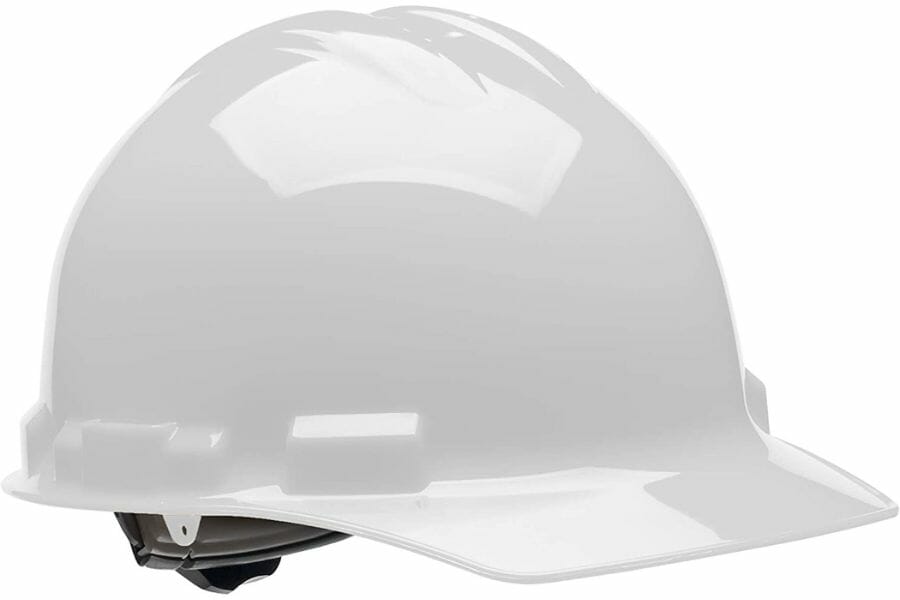
Any time you’re searching in caves, along cliffs, or any place where rocks and debris are above you a safety helmet is important. While we don’t enjoy having to wear them either we’ve seen plenty of people end up with bumps on their heads or worse from low ceilings or falling rocks.
If you’re just digging in a field or along a stream you won’t need one but any time you’re in a cave or cliffside you really should have one on.
We’ve found that the Malta Dynamics Hard Hat has been the best combination of price and comfort. Most hard hats are either very expensive or very uncomfortable. The Malta is the one we’ve found that manages to be both very comfortable and inexpensive.
We’ve seen it take some big hits that would have done some serious damage and keep on going.
Alternatives to consider
We haven’t really tried many other hard hats that we would recommend. They tend to be either very cheap and flimsy or way too expensive for us. Let us know if you know of any alternatives we should include here.
Safety glasses: We like the DEWALT DPG82 Safety Goggles (buy on Amazon here)
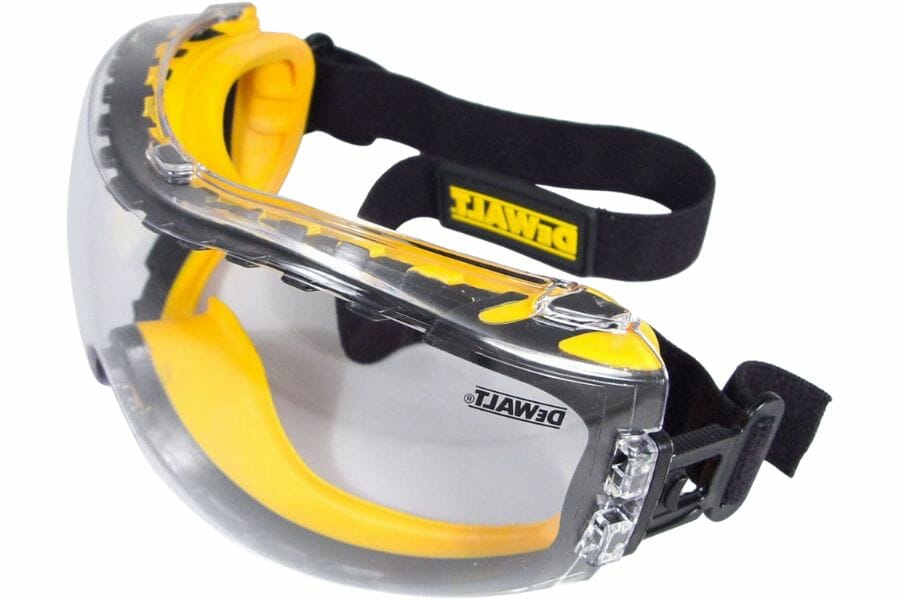
No rockhounding tool set is complete without some decent safety goggles. There is going to be a lot of dirt, rock splinters, and dust flying around once you get to your dig site. You need to protect your most important asset, your eyes.
Too often we’ve seen rockhounds sustain eye injuries because a random piece of rock flew off in an unexpected direction. Most of these injuries are minor but some can get pretty serious.
A comfortable pair of safety goggles, like the DEWALT DPG82 can protect your eyes and aren’t even noticeable to wear once you get used to them. They’re also fog resistant so you’ll be able to see in the peak of the summer heat.
Alternatives to consider
Any quality safety goggles or glasses you have will do the job. We recommend those that wrap around your face since rock splinters have a habit of ricocheting and can still easily get in your eyes if you only wear one-sided safety glasses.
Versatile headlamp: We like the SLONIK Rechargeable Headlamp (buy on Amazon here)
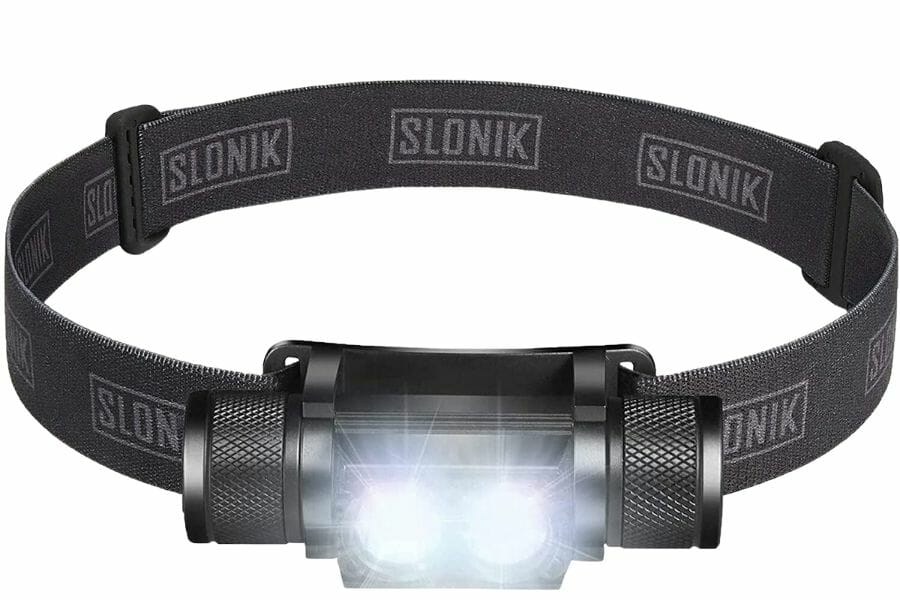
There have been many times when we’ve either been searching inside a dimly lit cave or we’ve had to trek out of our dig site in the growing darkness. In these situations a good headlamp is essential.
It’s very easy to overlook rare crystals and gems when the light is dim and you don’t want to work all day only to miss out on paydirt because it starts to get dark. It’s also WAY easier to miss your chisel with your hammer and smack your own hand when you don’t have good lighting.
We really like the SLONIK Rechargeable Headlamp because it provides excellent light and provides a lot of flexibility in how you wear it. It comes with the necessary rigging to attach it to a hard hat or just wear it on your head. Most headlamps are only good for one or the other.
It also charges pretty quickly and tends to last a really long time.
Alternatives to consider
There are a lot of other headlamps out there and you really don’t need any particular one as long as it is comfortable to wear, can be worn on a hard hat, and has a battery that lasts for several hours without fail.
Other Essential Rockhounding Equipment
In addition to the recommended tools for rock hunting that we covered above we wanted to share several more items that we typically take with us. Most won’t have specific recommendations since there is a lot of personal preference involved in the selection.
When you go out we suggest you bring:
A good bucket
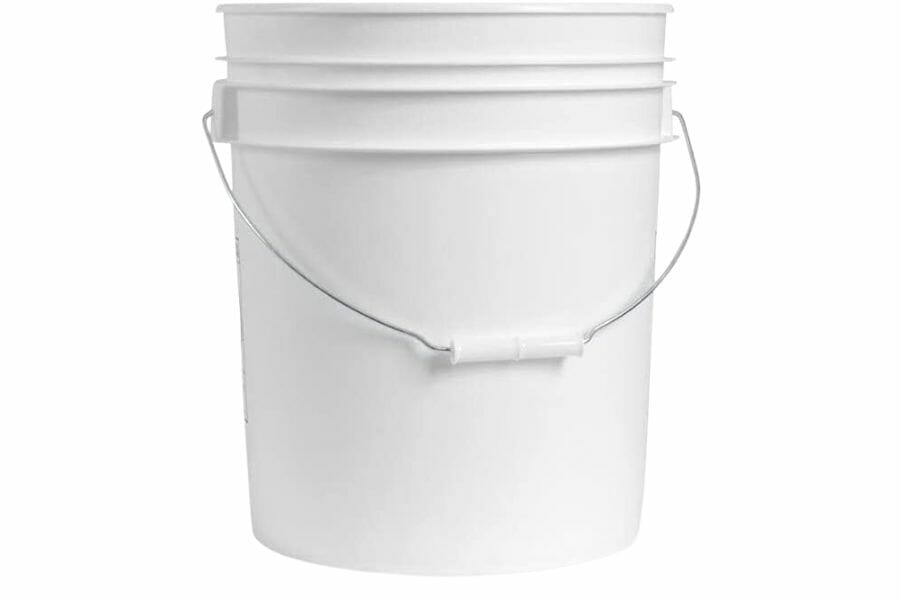
A simple, sturdy bucket is a simple but essential tool for rockhounds. We tend to use a 5-gallon bucket we bought years ago that has held up really well. It’s the same bucket you can buy at Home Depot or many other hardware stores.
While simple in structure a bucket is very useful for a very wide range of things. It can be a convenient way to carry extra tools and it’s a safe place to store the rocks, minerals, and fossils that are found during the hunt.
With its durable construction, a bucket can handle the weight of multiple rocks without breaking and can also be used to transport water, which is often necessary for washing off dirt or mud from newly discovered treasures.
Additionally, when hunting in riverbeds or at the beach, a bucket can be used to carry and sift through larger amounts of sediment.
Water spray bottle
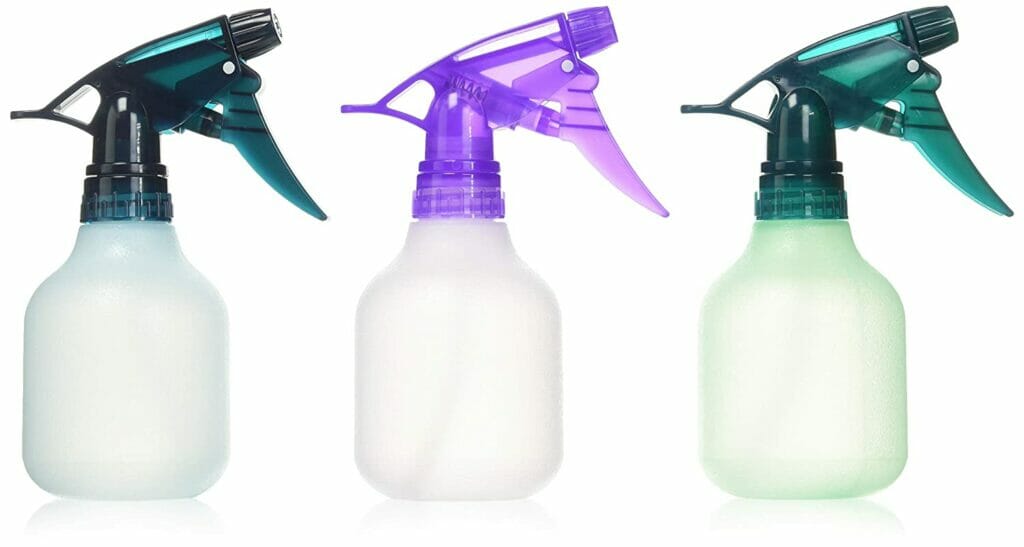
Often, rocks and minerals are covered in dust or dirt that can obscure their true colors and details. By spraying the newly found specimens with water, rockhounds can easily clean them on-site, revealing their true appearances.
It’s much easier to have a small spray bottle at hand, just a little 8oz bottle like this works, than trying to haul around a bucket of water or use bottled water. Just a few sprays and you can usually remove enough dirt and dust.
This immediate cleaning can help with the initial identification process. Additionally, some rocks and minerals, especially those with metallic or iridescent qualities, can display more vibrant colors or unique features when wet.
Rugged boots
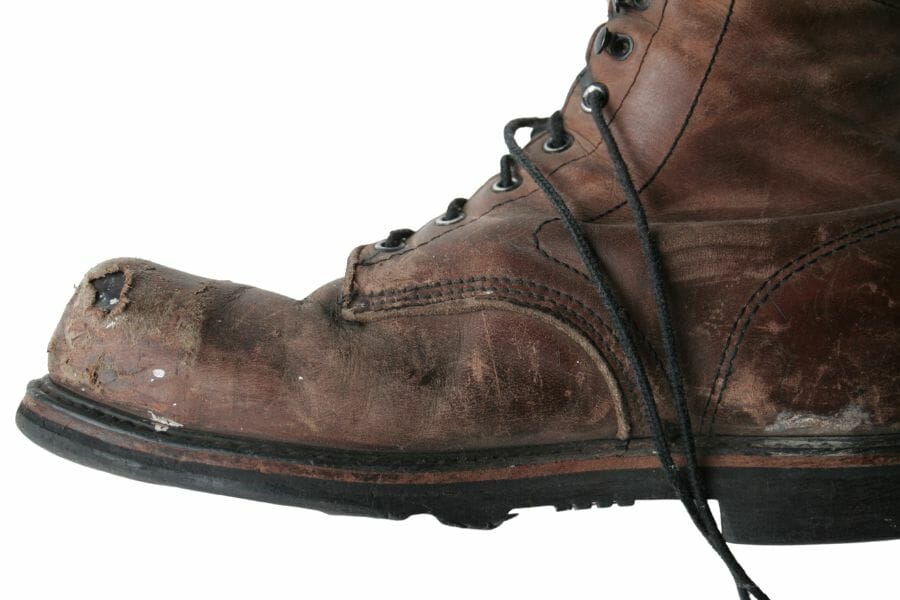
Rock hunting often involves traversing rugged terrains like rocky outcrops, riverbeds, or steep hillsides where standard footwear might not provide enough support or protection. Good boots, especially those with reinforced toes, can protect the feet from sharp rocks and prevent injuries.
You will also be surrounded by falling rocks, hammers, and chisels on a pretty constant basis while you are digging or mining. It will only take one incident where a rock hammer falls on your unprotected toes before you change your mind! A good steel toe provides a lot of protection.
Good boots also provide better grip and stability on slippery or uneven surfaces, reducing the risk of falls or sprains. In addition, sturdy boots are designed to withstand harsh conditions and long periods of wear, making them ideal for extended rockhounding expeditions.
Protective gloves
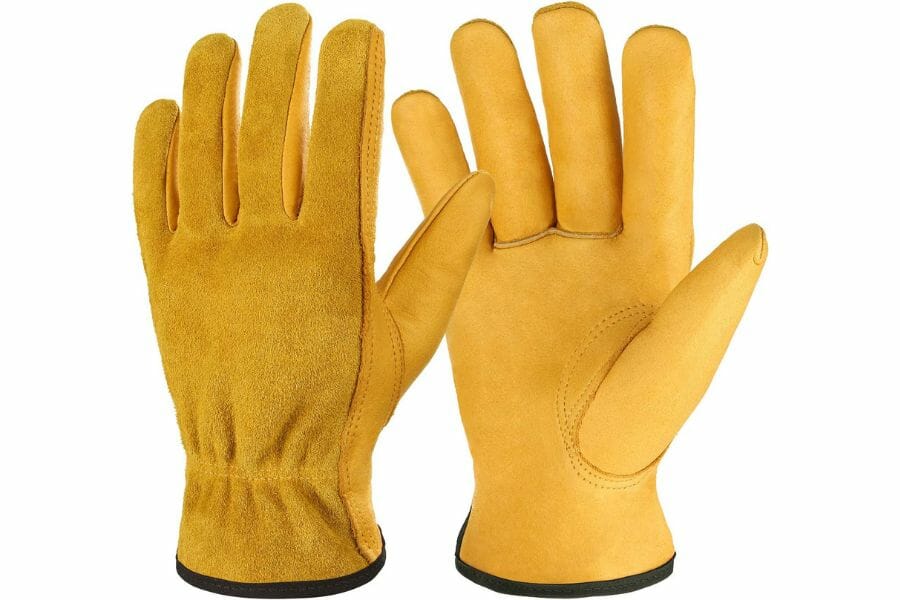
You’re going to be working with your hands a lot when you’re out in the field and an inexpensive pair of work gloves like these are a very smart investment. There are so many hazards to your hands and one small mistake can end your day if you’re not protected.
You’re going to be spending a lot of time both out in nature and dealing with hard tools. It’s the rare rockhound that can avoid injury from things like thorns, sharp rocks, rock shards, and the repetitive motions of hammering.
Find yourself a pair of well-fitting leather work gloves that are comfortable to wear for hours at a time. A glove that doesn’t fit right is going to give you blisters and be more pain than it’s worth.
Rockhounding Tools For Beginners
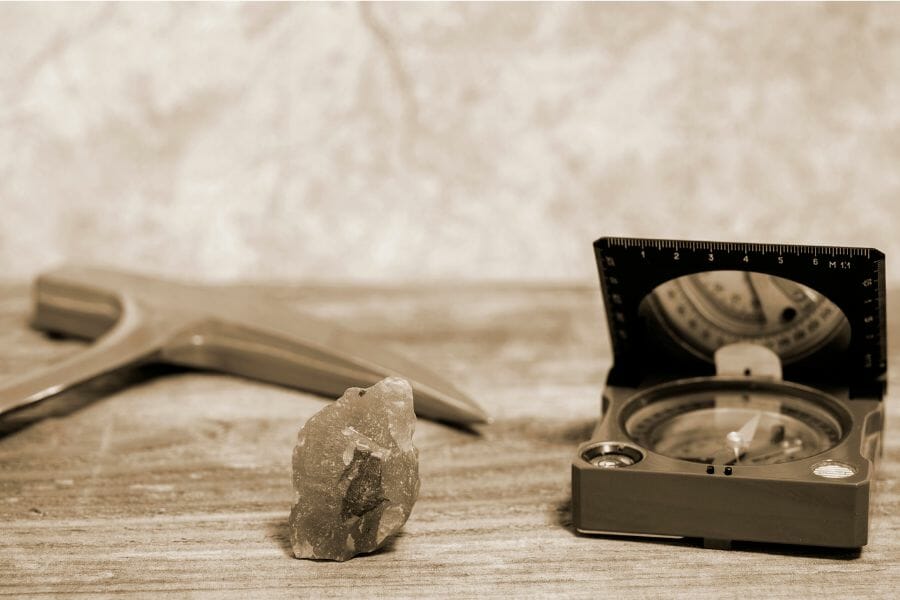
When you’re first starting out it can be very tempting to buy all the equipment possible and really set yourself up for success. This is a lot of fun and can make your life a lot easier down the road. You will also be confident that you have the right tool for every situation.
However, if you’re on a budget or want to ease into expanding your rockhounding tool collection we have suggestions on how to think about what you’re buying and in what order. You likely have a lot of these tools already or something that can be used in their place.
What you need will depend on what you’re searching for but generally, these are the rockhounding tools we recommend for beginners with everything coming out below $100 total:
#1 – Rock Hammer – Estwing 22 oz
This hammer is relatively inexpensive and you really need a quality hammer to do most rockhounding activities. You can also get away without having a larger hammer for a while if you use this one for hammering tasks.
#2 – Chisels – Kendo 3-Piece Chisel Set
A quality hammer and chisel set is absolutely vital to samely chip through rock. Regular carpentry hammers and screwdrivers will shatter and splinter causing injuries to you and those around you.
You can also use a chisel in place of a prybar in a pinch.
#3 – Shovel – Koleiya 28-inch shovel
Digging and moving earth are probably the two most common activities you’re going to do. You can use a larger shovel than this if you happen to have one but lugging it around can be annoying.
#4 – Jewelers Lens – JARLINK 30X 60X Illuminated Jewelers Loupe Magnifier
You need a reliable way to examine and identify the various rocks, minerals, and gems that you find. It’s going to be impossible to do that without a decent jeweler’s lens that can magnify at least 20X.
These are so cheap and small that everyone should have one.
#5 – Headlamp – SLONIK Rechargeable Headlamp
You’re going to find yourself in situations with low light or with night approaching fast. Having a reliable light source is going to make your life a lot easier and prevent you from being stranded in the wilderness.
You don’t need a headlamp if you’re not planning on doing any digging in caves or in low light. A flashlight will work if you’re just going to use it to get to and from your site.
#6 – Bucket
You’re going to be moving a lot of dirt and water around so you’ll need something simple to help with that. Any simple but rugged bucket will do the job here when you’re just starting out.
#7 – Safety gear – Helmet, goggles, boots, and gloves
If you’re going to be looking through caves and chiseling through stone you want to have a helmet, goggles, boots, and gloves. This is a hobby where accidents can happen and a little safety gear can prevent most injuries.
If you’re just going to be digging through mine dumps or sifting through gravels you can get away without most of those. Gloves and boots are always a good idea but you don’t need a helmet or goggles if there isn’t any danger of falling rocks or flying splinters.
Where To Buy Rockhounding Tools
Buying the tools you need for rockhounding is pretty easy since nearly everything we recommend is used for other hobbies or professions. Nearly everything on our list can be bought on Amazon and most of our recommendations (or something like them) can be found at your local hardware store.
There are a few items, like quality rock hammers or sifting screens, which might be hard to find locally but are easy to find online. The internet has made finding rockhounding equipment much, much easier to find than in the 80s or 90s!

